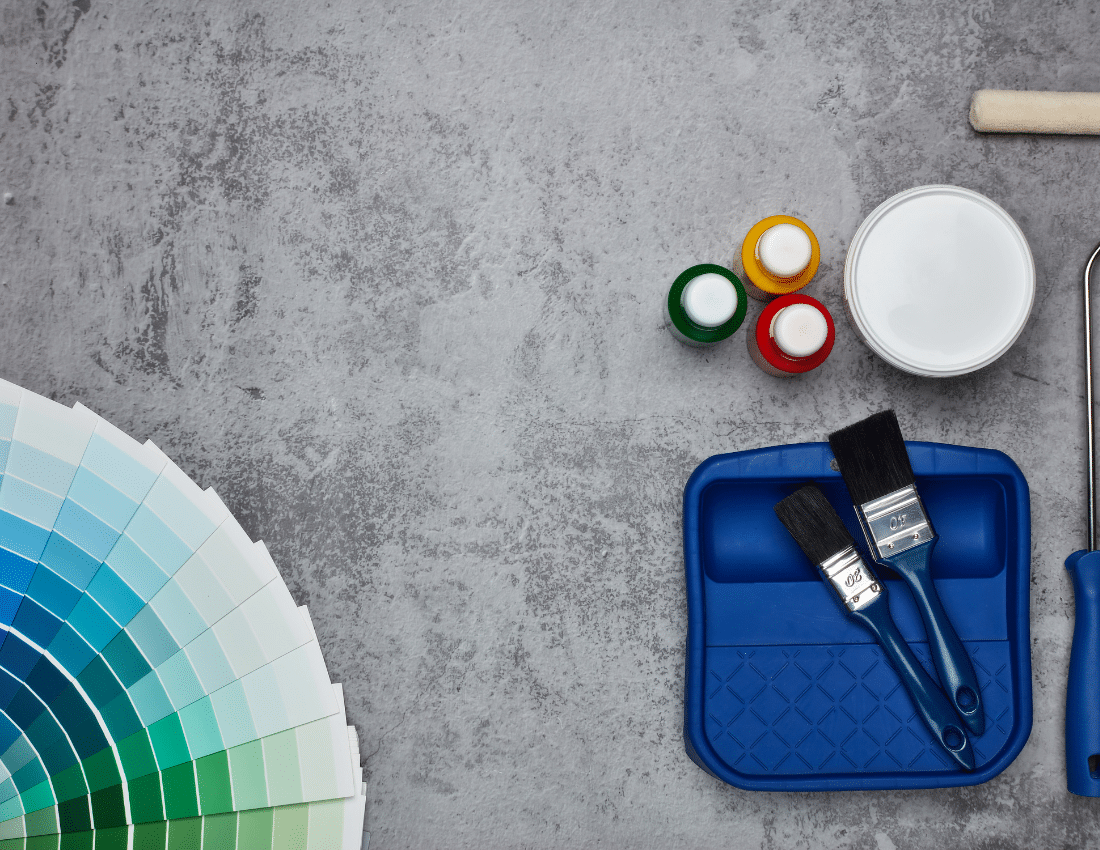Picking a paint color visualizer can save you from the stress of second-guessing. Anyone who has stood in front of a wall of color swatches knows how overwhelming it feels.
The palette seems endless, and what looks good under the store’s fluorescent lights may look completely different once it’s on your wall. A paint color visualizer helps take the guesswork out by showing you realistic previews of how shades will look in an actual room.
These tools have become a trusted part of the painting process. They’re designed to let you experiment with different paint colors, test combinations, and even preview a full palette before the first coat goes on. Used correctly, a paint color visualizer saves time, helps prevent costly mistakes, and gives you more confidence in your final choice.
Key Takeaways:
- A paint color visualizer helps preview colors on real rooms before painting.
- Each tool offers different features, from simple uploads to advanced palettes.
- Lighting, sheen, and surfaces affect how the final paint looks.
- Visualizers narrow options, but expert painters make results last.
- Picking the right palette prevents costly repainting mistakes.

Why a Paint Color Visualizer Matters
A visualizer isn’t just a toy or marketing gimmick. It’s a tool that connects imagination with reality. By previewing colors digitally, you’re able to:
- Compare multiple shades side by side
- Test accent walls, ceilings, and trims with different palettes
- View how colors react under different lighting conditions
Without this step, you might risk a mismatch or regret a shade that looked great on paper but feels too dark or too dull once applied. Even professional painters find value in these tools because they help align expectations with clients from the start.
1. Benjamin Moore Personal Color Viewer
Benjamin Moore’s visualizer is known for its simplicity. It doesn’t overwhelm you with options but instead provides a reliable way to preview colors on sample rooms or upload your own photo.
How to Use It Best:
- Start with a prepared room if you’re just testing palettes.
- If you want accuracy, upload your own photo and register to save progress.
- Stick to combinations within the same palette family to see how subtle shifts in shade affect the mood.
Benjamin Moore’s strength is reliability. The palette may feel ordinary, but that’s what makes it relatable and easier to apply in real homes.
2. Sherwin-Williams ColorSnap Visualizer
Sherwin-Williams has one of the most advanced paint color visualizer platforms, and it’s available on both mobile and desktop. Their tool connects seamlessly with their in-store matching technology, which makes the digital-to-real process much smoother.
How to Use It Best:
- Experiment with their curated collections or partnerships with brands like HGTV Home for inspiration.
- Use the drag-and-drop palette to create custom schemes and preview how shades interact.
- Save your work if you register, making it easier to bring ideas into the store.
The precision here is higher thanks to their proprietary matching system, which reduces the gap between digital preview and finished paint.
3. Valspar Virtual Painter
Valspar’s tool, tied to Lowe’s stores, gives you flexibility by allowing adjustments not only on walls but also on accent pieces like furniture. This helps create a fuller view of the room’s palette.
How to Use It Best:
- Try experimenting with accent walls and trim alongside the main color.
- Test palettes on furniture to see how colors coordinate with existing pieces.
- Use this tool if you want to explore bold paint ideas without commitment.
It can be slightly clunky to flip between swatches and room previews, but the ability to adjust secondary surfaces gives it an edge.
4. PPG Paints Color Visualizer
PPG’s tool stands out with advanced edge-detection, which makes mapping walls faster and more accurate. It works directly on their website without the need for a separate app.
How to Use It Best:
- Upload a personal photo to see how colors interact with your room’s lighting.
- Test a variety of palettes quickly with the one-click paint option.
- Use the share function to get feedback from friends or family.
The realistic visualization here is stronger than many alternatives. PPG also makes it simple to save your project and revisit it later without needing a formal account.
5. Ace Hardware Paint Studio Visualizer
Ace Hardware’s visualizer lets you filter by brand and by palette collection. This makes it easy to narrow down from thousands of colors to a manageable set.
How to Use It Best:
- Select from ready-made room scenes or upload a photo.
- Use filters like Benjamin Moore collections to streamline your choices.
- Compare shades directly to see how subtle differences in color can affect the feel of the room.
While less advanced than some competitors, it provides a straightforward way to test palettes without getting lost in options.
Making Better Choices With Your Palette
Using a paint color visualizer is the first step toward a confident paint project. Still, pairing colors the right way matters just as much as choosing the main wall color. Accent shades, trim tones, and ceiling finishes should all work together. If you’re experimenting, avoid overly trendy shades unless they align with your long-term style.
This is where understanding exterior paint types or even knowing the common painting mistakes to avoid can make a difference. Choosing the wrong sheen, ignoring adhesion, or skipping primer can cause problems later. The visualizer shows the look, but the paint product itself is what determines durability.
Common Challenges With Paint Visualizers
While paint color visualizers are incredibly helpful, they’re not perfect. Every company builds theirs differently, which means you’ll notice variations in accuracy, features, and ease of use.
Some of the most common challenges include:
- Some platforms let you upload personal photos, while others only offer pre-staged rooms.
- Certain tools are more precise with lighting, while others focus on quick palette swaps.
- Colors on a screen don’t always match the final shade on your wall.
- Surface texture, sheen, and room lighting can change how paint appears once applied.
That’s why it’s best to treat these tools as a strong starting point, not the final word.
If you’re curious about long-term results, think about how factors like siding, masonry, or stucco may respond to your chosen paint. You can read more about how long paint lasts to see how different conditions affect performance.
Final Thought: Turning Visuals Into Real Results
At the end of the day, a paint color visualizer gives you direction. It narrows the palette, removes some of the guesswork, and helps align everyone in the household around a decision. But the real transformation happens when paint meets the wall — and that’s where expert painters step in.
At Marlin Painting & Remodeling, we don’t just match a color on a screen. We bring the right product, primer, and finish to make sure your paint holds up against real-world conditions. Our process is designed to deliver results that look just as good in person as they did on the visualizer:
- Step-by-step consultation to refine your color scheme
- Product recommendations tailored to siding, brick, or concrete surfaces
- Careful prep work for adhesion and long-lasting coats
- Clean application with attention to detail on trim, ceilings, and walls
- Final walkthrough to confirm you love the finished result
A paint color visualizer is a smart way to begin, but if you want results that last, let our expert painters handle the full process.
Call Marlin Painting & Remodeling today at 615-552-7680 for a FREE estimate in your area and surrounding communities.


